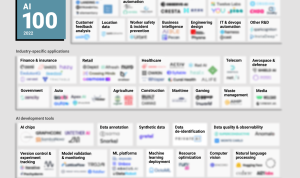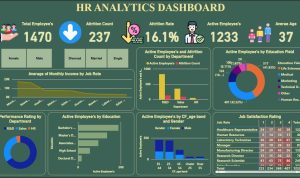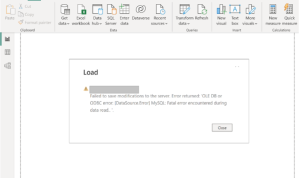BI Tool Comparison: Looker vs Domo sets the stage for an intriguing exploration of two powerful business intelligence platforms that are transforming how organizations analyze data. Both Looker and Domo offer unique features and capabilities, catering to different business needs and user preferences. In a world where data-driven decision-making is paramount, understanding the strengths and weaknesses of these tools is essential for any business looking to optimize its analytics strategy.
As we delve deeper into this comparison, we’ll highlight the defining characteristics of each tool, examine their functionalities, and discuss the scenarios where one may outperform the other. This journey through the landscape of business intelligence tools aims to equip you with the insights needed to make an informed choice.

In recent years, the world has witnessed a significant transformation in various aspects of life, largely driven by advancements in technology and changing social dynamics. As we embark on this journey of exploration, it becomes essential to understand how these changes have shaped our daily lives, professional environments, and interactions with one another. One of the most notable developments has been the rise of remote work.
With the advent of high-speed internet and collaborative tools, more people than ever have the opportunity to work from anywhere. This shift has brought about a newfound flexibility, allowing individuals to balance work and personal life in a way that was previously unimaginable. Companies have embraced this trend, often finding that productivity increases when employees have the ability to create their own schedules and work from environments that suit their preferences.However, the transition to remote work has not been without its challenges.
Many individuals struggle with creating boundaries between work and home life, leading to burnout and stress. Additionally, the lack of face-to-face interactions can lead to feelings of isolation. Companies and employees alike are learning to navigate these hurdles, with many organizations implementing strategies to foster communication and maintain team cohesion. Regular video calls, virtual team-building exercises, and open lines of communication through messaging platforms are just a few ways that teams are staying connected.Another crucial area of change is the increasing importance of mental health awareness.
In the past, mental health often took a backseat to physical health, with many individuals hesitant to discuss their struggles. However, recent societal shifts have encouraged open dialogue about mental well-being. Employers are recognizing the importance of supporting mental health in the workplace, offering resources such as counseling services and stress management workshops. This cultural shift not only benefits employees but also enhances overall productivity and job satisfaction.Education has also seen a significant transformation, particularly with the rise of online learning.
The COVID-19 pandemic accelerated this trend, forcing educational institutions to adapt quickly to remote teaching. Many students have found that online courses provide flexible learning opportunities, allowing them to balance their studies with other commitments. However, this shift has also highlighted the digital divide, as not all students have equal access to technology and reliable internet connections. Educators and policymakers are tasked with addressing these inequalities to ensure that all students can benefit from the advantages of online learning.In addition to education and work, our social interactions have evolved dramatically.
Social media platforms have become the primary means of communication for many, providing avenues for connection that transcend geographical boundaries. While these platforms offer opportunities to engage with friends and family, they also come with challenges, such as the potential for misinformation and decreased face-to-face interactions. Striking a balance between online and offline connections is essential for maintaining healthy relationships and fostering genuine interactions.As we delve further into the digital age, it is essential to consider the role of technology in shaping our future.
Artificial intelligence (AI), for example, is revolutionizing various industries, from healthcare to finance. AI has the potential to streamline processes, enhance decision-making, and improve customer experiences. However, the rapid advancement of AI technologies raises ethical questions about privacy, job displacement, and reliance on automated systems. Society must engage in conversations about these issues to ensure that technological progress aligns with human values.Moreover, the role of sustainability is becoming increasingly prominent in both consumer behavior and business practices.
As awareness of climate change and environmental issues grows, individuals and companies are seeking ways to reduce their carbon footprints. This shift is evident in the rising demand for sustainable products, eco-friendly packaging, and corporate social responsibility initiatives. Businesses that prioritize sustainability not only contribute positively to the planet but also resonate with consumers who value ethical practices.In conclusion, the changes we are witnessing today are multifaceted and far-reaching.
From the rise of remote work and online education to the importance of mental health awareness and sustainability, each aspect contributes to a new landscape of living and working. As we move forward, it is crucial to embrace these changes while also addressing the associated challenges. By fostering open communication, supporting mental health, and prioritizing ethical practices, we can navigate this evolving world with resilience and adaptability.
The future is bright, and by working together, we can create a society that values innovation, inclusivity, and well-being for all.








